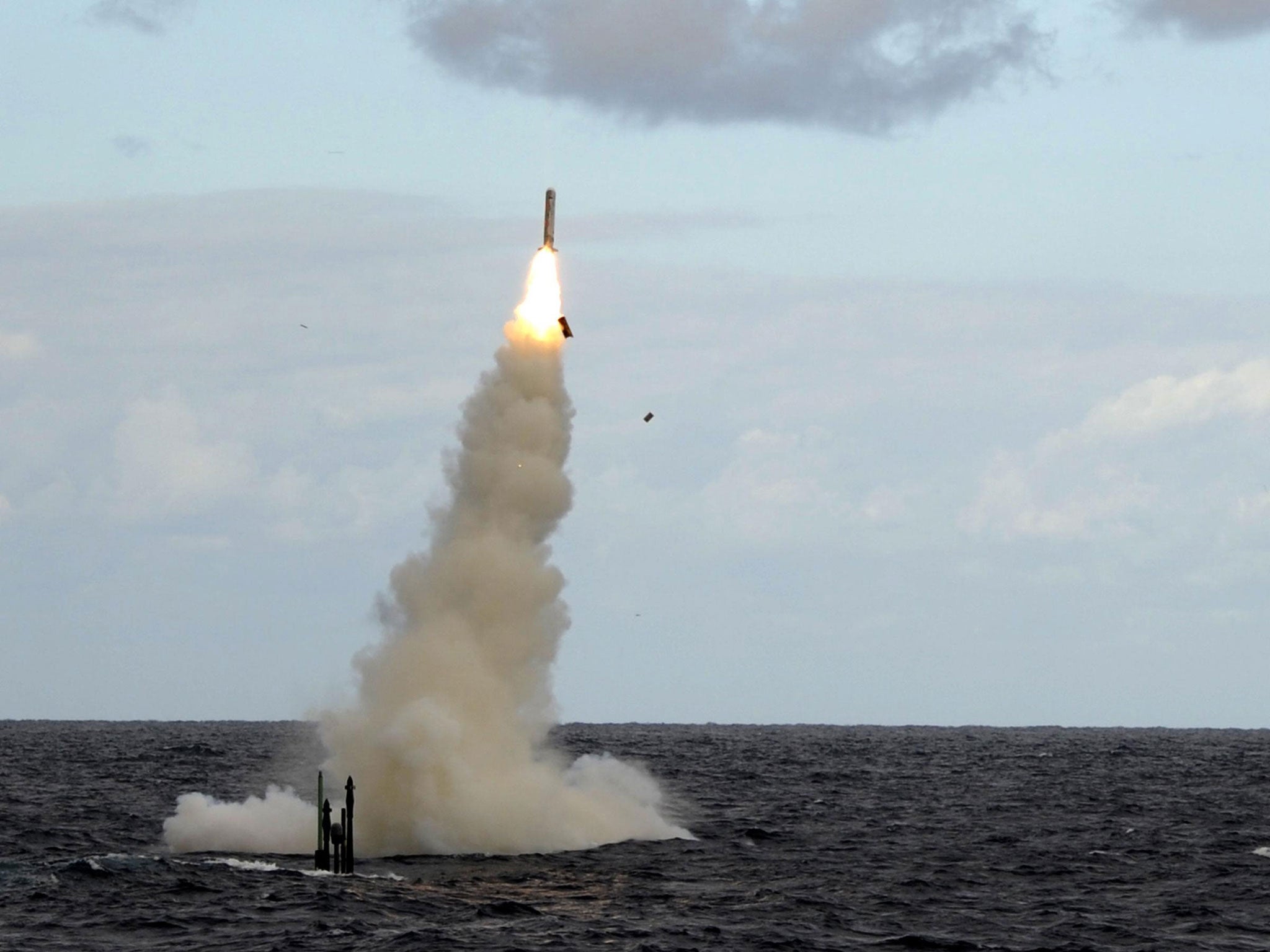Syria crisis: A short sharp series of air strikes is the West’s likely response

Your support helps us to tell the story
From reproductive rights to climate change to Big Tech, The Independent is on the ground when the story is developing. Whether it's investigating the financials of Elon Musk's pro-Trump PAC or producing our latest documentary, 'The A Word', which shines a light on the American women fighting for reproductive rights, we know how important it is to parse out the facts from the messaging.
At such a critical moment in US history, we need reporters on the ground. Your donation allows us to keep sending journalists to speak to both sides of the story.
The Independent is trusted by Americans across the entire political spectrum. And unlike many other quality news outlets, we choose not to lock Americans out of our reporting and analysis with paywalls. We believe quality journalism should be available to everyone, paid for by those who can afford it.
Your support makes all the difference.What lay behind the massacre of 1,300 people, the worst atrocity so far in Syria’s vicious civil war, is yet to be fully uncovered. But Western powers have declared they are convinced that Basher al-Assad’s forces were responsible and military intervention now seems increasingly likely.
General Martin Dempsey, the head of the US military, met his counterparts in allied states, including Britain’s General Sir Nick Houghton, at the Jordanian capital Amman, yesterday in what was seen as putting the final touches for a campaign if the go ahead is given by Barack Obama.
The reality on the ground, and in this case especially the air, is that no mission will be undertaken without Washington’s say-so. Britain and France may have been the most voluble advocates of confronting the Damascus regime, but it will be American Tomahawk missiles, B-2 bombers and F-16s that will take the lead role in inflicting punishment on the regime for supposedly crossing the US President’s “red line” on WMDs.
The scale and scope of the operation would depend on which of the various contingency plans put forward would be chosen. What gives the unfolding scenario an additional twist is that General Dempsey, and Sir Nick’s immediate predecessor, General Sir David Richards, had repeatedly urged caution against involvement in the two and half year old conflict. The French high command, relieved that their intervention in Mali has been relatively pretty successful, are also wary of entanglement in Syria.
In meetings with politicians, the commanders have pointed out that the strife is now deeply sectarian and the presence and power of al-Qa’ida affiliates in the ranks of the opposition adds hugely to the complications. General Dempsey, in his latest statement on the issue, said last week that air strikes “would not be militarily decisive, but it would commit us decisively to the conflict”.
But, with political and military leaders at least in agreement that there must not be Western boots on Syrian ground (with the possible exception of special forces) an air war is the likely scenario. And despite General Dempsey’s warning about being “committed decisively”, defence sources point towards an extremely sharp, but relatively short series of assaults.
The US has currently got four warships in the eastern Mediterranean. The USS Mahan, USS Barry, USS Gravely and USS Ramage between them carry around 430 Tomahawk Block III missiles, costing around £300,000 each, with a range of up to 1,500 miles.
The USAF would also be able to carry out strikes using B-2 stealth bombers based in Missouri, which would be able to reach targets in the Middle East with just one refuel with each aircraft carrying 40,000lbs of ordnance. In addition, the Americans have the option of using a variety of fighter-bombers including F-16s from their bases in the region.
Despite the recent deep cuts in the defence budget, the UK is in a position to take part in the mission with Trafalgar-class submarines armed with Tomahawks and Tornados from RAF Marnham in Norfolk, with refuelling, carrying Storm Shadow missiles with a range of 150 miles. The French can provide what the UK currently cannot, an aircraft-carrier. Following a major refit, the Charles de Gaulle is now operational at Toulon. The French also have Rafale and Mirage jets stationed in the UAE.
The most obvious targets would be the Syrian regime’s chemical complexes. There are, it is believed, chemical storage facilities in Damascus, nearby Dumayr, Palmyra and Homs, Masyat, north of Aleppo and Latakia on the coast.
Production plants are said to be near Damascus, Latakia, Hama and Aleppo.
An air campaign would need to take out the regimes own air capabilities. There are large bases for airplanes in Damascus, Dumayr and Homs and missile launching sites at Al Safrah and Al Kibar.
Other potential targets could include the155th Brigade of the 4th Armoured Division of the Syrian Army blamed for last week’s Ghouta attack, commanded by President Assad’s brother Maher as well as units of the Shabia, Alawite militia, which have been accused of extensive human rights abuse.
The great danger is “mission creep”; but with the military commanders so wary about getting sucked into the Syrian quagmire that, according to defence sources, it is unlikely to happen on this occasion.
Join our commenting forum
Join thought-provoking conversations, follow other Independent readers and see their replies
0Comments